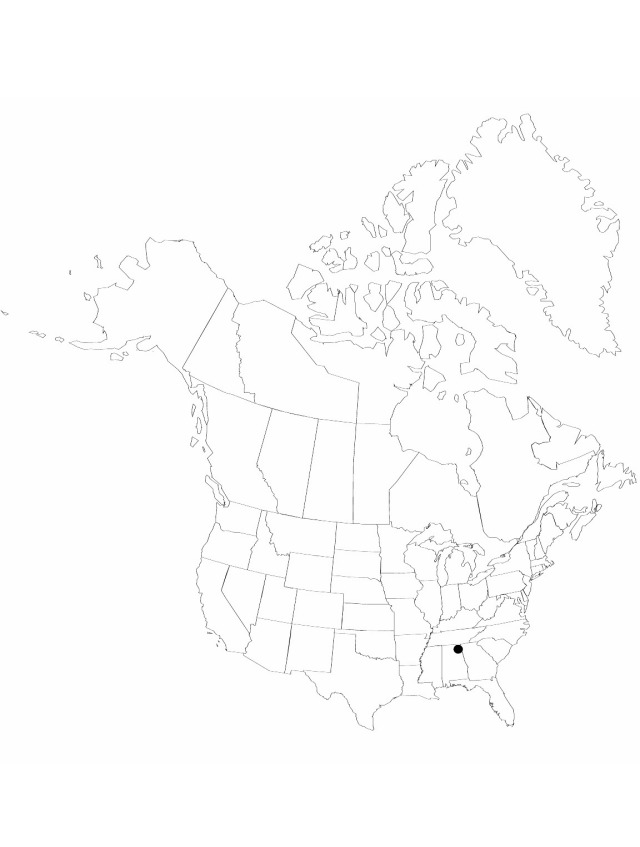Herbs, perennial, to 50 cm; rhizomes coarse; stolons absent; corms absent. Leaves mostly submersed, rarely emersed, sessile, phyllodial, flattened to lenticular, 5–30 × 0.2–0.5 cm. Inflorescences racemes, of 2–5 whorls, emersed, 1.5–8 × 1–7 cm; peduncles 1–2.5 cm; bracts connate more than or equal to ¼ total length, lanceolate, 0.5–1.5 mm, delicate, not papillose; fruiting pedicels spreading, cylindric, 0.6–2.5 cm. Flowers to 2.5 cm diam.; sepals recurved to spreading, not enclosing flower or fruiting head; filaments dilated, shorter than anthers, minutely tomentose; pistillate pedicellate, without ring of sterile stamens. Fruiting heads 0.5 cm diam; achenes obovoid-triangular, abaxially keeled, 2 × 1 mm, beaked; faces tuberculate, wings 1, scalloped or toothed, glands 0–1; beak lateral, incurved-erect, 0.3 mm.
Phenology: Flowering spring–fall.
Habitat: Riverine shoals and pools
Elevation: 300–400 m
Discussion
The rhizomes of Sagittaria secundifolia grow in crevices of bedrock along the Little River in Alabama. During lower water periods, the plant flowers, with peduncles reaching the water surface, and flowers more or less floating on the water.
Of conservation concern.
Selected References
None.
